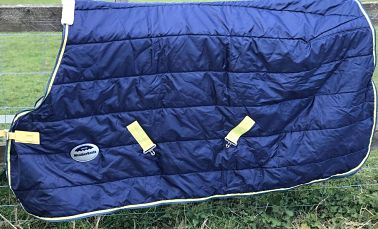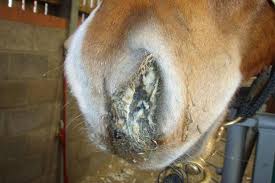Are you a Yard Manager – Owner – do you employ staff? INDUCTION – WHAT IS IT? AND WHY WE NEED IT IN THE EQUESTRIAN INDUSTRY Do you have an induction programme in place for new employees? This is an Accredited Responsible Groom induction course from Lingfield What is induction? – who needs it? – why? – why should you know about it? Written for equine employers and their staff & used by professional yard owners, ABRS & BHS livery yards.
If you own or manage a stables / yard or equestrian centre, take a moment to think about how you work with your new employees, volunteers or helpers? First impressions count
When someone starts working for you and your yard, their first impression will have a lasting impact on how they view you their employer, and the yard. A welcoming and effective experience therefore, is the key to making this first impression a positive one. Induction
Induction is the term used to describe the process employees go through to adjust or acclimatise to their new jobs and working environment. You could use part of this orientation to introduce new employees to the rest of the team at coffee break or lunch time perhaps. This is a useful time to introduce ‘socialisation’, and a time when they can build working relationships within their new team. If existing staff have also undergone a good induction they will understand and support you and the new employee.
It is useful to have some sort of training programme in place which is part of the induction process.
A simple equestrian industry based training course introduced several days after their first day (and during their trial period if you use one) could cover this for you and will provide new employees & freelancers with information on how to act and interact with other team members and clients. The freelancer in the equine industry –
Has little access to training and improvement. The equine industry has little in the way of advancement on the yard. There are few options for ‘moving up the ladder’ in their career yet freelancers are an important part of your workplace. Self employed people should be and are in many professional yards encouraged to take part in training. Those yard owners who provide cpd or training or part funding for this are more likely to retain staff, keep their freelancers happy and feel as though they are part of your team. Word gets around quickly in local equine circles and as a result your reputation is likely to be improved and your business more successful.
Your employees first week at the yard should include information for young people especially, on basic business practices and you should explain to them why you have various policies in place on the yard (health and safety, equality, bullying, data protection etc.,). Your introduction should contain information on how to approach issues with liveries or clients and how to work with and support other team members. If you have not explained these things to them they are less likely to work with you as a good and informed employee.
Things to cover in the early part of your induction programme might be : Evacuation procedures in case of fire. First aid facilities. Health and safety policy. Accident reporting. Protective clothing. Specific hazards. Policy on smoking. Client relationships.
At a slightly later stage or within a training course/programme the following could be introduced Confidentiality. Compliance training such as data protection, bullying, bribery and modern slavery. A good induction course / programme covers all this and determines whether or not you are a professional employer. What size yard needs to carry out an induction process?
Every yard, large or small, from 1 employee or many more should have some sort of induction process in place for new workers. A process that will provide them with a positive experience of the yard.
The length and nature of the induction / training depends on the new person’s background and their role within the team. Induction of new employees will help them to integrate well into your team and your yard. Research demonstrates that induction programmes benefit both you the employer and your employee. Although it is often forgotten, an induction programme is just as important for volunteers and helpers. Benefits to Employers
For employers, the benefits of an induction process which includes some sort of training course or programme to introduce them to working on the yard and to what is expected of them, invariably reduces staff turnover and absenteeism. It increases employee commitment and job satisfaction. For employees, starting a new job is usually an anxious time and an induction course enables them to understand more about the yard, their role in the team and your ways of working.
Offering specific and progressive training and development options no matter how minimal, (rather than simple ‘on the job’ training) is a way to support and engage employees.
Research shows that employers who offer and provide genuine and relevant training tend to retain their staff. Elearning is one of the easiest ways to introduce this to employees today. Elearning avoids away days from the yard to attend courses. You may need to support them with IT processes in the initial stages even as far as helping with emailing. Few younger and indeed many older workers in the equestrian industry are full on IT literate.
Providing training however means it must be offered during the yards time – not the employees time. It is illegal for employees to have to train in their own time.
However, with elearning training becomes much easier and without too much re-arrangement of yard duties, just half an hour on a couple of days a week or 1 full hour a week could be set aside on days when it is not quite so busy. This would enable your staff to undertake online training of some sort without leaving the yard.
You may need to provide a small space for working on their elearning. It need not be a large area or a whole room. Simply a small table and chair in the corner of the office or tack room would enable a good studying environment. Furthermore access to a laptop or computer may in some circumstances be required. This access to a laptop may well be vital for those who use only a mobile phone or have to share a laptop at home. Course work is invariably easier on a laptop. This space for their studies will show that you are keen to support them in their career. If two or more staff members are being provided with training, they could work together and need not be working on the same elearning programme. This is often an excellent way for staff of varying standards and experience to support each other as a team and to improve and broaden their respective knowledge. Proof of the Pudding
80% of staff cite professional training as being an important part of their decision to stay or go.
In a survey run by Skillsoft (UK), approximately two-thirds of contributors stated that they felt workplace training should continue throughout their career.
In another recent national survey of over 400 employees spanning three generations (Baby Boomers, Generation X, and Millennials), 70% of the respondents indicated that job-related training and development opportunities influenced their decision to stay at their job. The Millennials had the most significant results, with 87% of them citing access to professional development or career growth opportunities as being very important to their decision of whether to stay or go. Benefits to Employees
New staff members or volunteers need to understand the culture, the people, and what’s expected of them in their role, so a course should contain multiple, integrated elements. For example it should include health and safety information required by law together with welfare requirements for the horses and ponies along with practical information on their working environment and facilities. The programme should also familiarise the new employee with the company culture and values and provide information specific to their role. It should point them in the direction of any routes to career advancement, future training and promotion. Even the worker in the small yard needs an aim for their future and support towards personal goals. Individualising an induction programme
Owners/Managers should always invest time in inducting new staff members. Attention needs to be paid to whether they might require different approaches to induction in general. For example, mature people returning from career breaks or those who have had a long break from working or from equestrian environments. If they are volunteers or part time workers, managers must ensure they are clear about the objectives of the arrangement. If employees / helpers have other needs your induction programme may need to be taylored to them personally – for example if the person has special needs and this can be educationally or physically. What can you expect from introducing a good induction process?
A well-designed induction results in a positive first experience of your yard. It means the employee: Settles in more quickly. Gets to know and integrates into the team more quickly. Understands your values and culture. Becomes productive more quickly It encourages them to work to their highest potential and to the best of their ability within the team environment. This course from Lingfield is aimed at grooms & helps with both induction and further training: The Responsible Groom The negative aspects of not having an effective induction process:
Without an effective induction, new employees/volunteers/helpers can easily and unbeknown to you, get off to a bad start. They may lack clarity in their own role and how it links to the rest of the team and your goals as am employer.
This will undoubtedly impact on their intention to stay in the role. First impressions count. If they do not get a good first impression they may well leave quite soon.
Staff turnover like this results in: Additional cost and time because you will have to recruit a replacement. Wasted time for the manager/employer who was aiming to settle the new employee into their role. Lowering of morale for the remaining staff and even yourself. It is detrimental to the leaver’s employment record. It causes damage to the yard brand/reputation. Ongoing Learning
It’s also important that the process continues into employment – managers should consider the ongoing support that a new employee will need to order to settle in and acquire the knowledge they need for their role. A ‘buddy’ system can provide support more informally to help new employees settle in, and ensuring new starters understand the learning and development opportunities available to them. The new employee will benefit from courses and cpd so consider training courses as part of your employer’s package.
Furthermore, bearing in mind the equestrian industry is heavily staffed by females it is important for ongoing training to encompass the possibility of specific needs at specific times of the month or at specific ages in life such as those goiong through menopause or changes in life. Some people are affected more seriously than others. These are thing the employer cannot ignore in today’s world. What to avoid Your induction process starts with the first interview you must avoid implying unreasonable expectations by overselling the type of work the employee will be undertaking. Avoid creating an induction programme that focuses only on administration and compliance and does not reflect your values. The effective induction programme should assure the new employee that they have made the right decision to join your yard. Avoid providing too much information on the first and second day. Do not overwhelm them. Keep it simple. ©The Equestrian Academy Professional : Affordable : Accredited
The Responsible Groom course from Lingfield – ideal for staff training
The terms ‘stables’ or ‘yard’ in this article encompasses riding stables / equestrian centres / trekking yards / livery yards / pony party groups / CIC or charities running a support centre for educational or emotional needs – and many other types of yard.



Receive latest news and industry insights straight to your inbox.